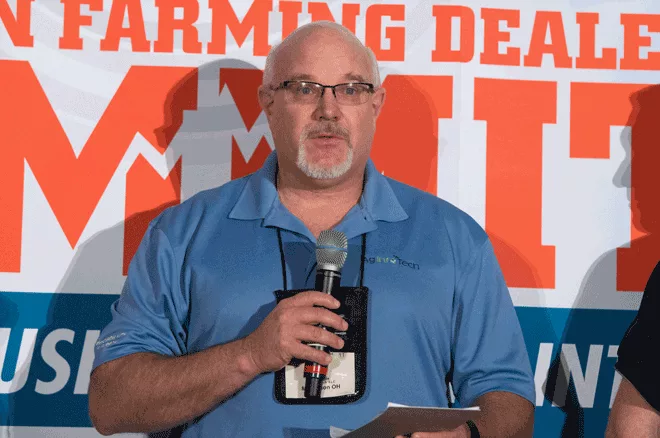A Precision Farming Dealer Staff Report
The 2017 Precision Farming Dealer Summit succession planning roundtable in St. Louis “played” to a packed room. Moderated by Tim Norris, CEO, Ag Info Tech (2016 Most Valuable Dealership), Mount Vernon, Ohio, the participants included family-owned precision dealerships with a handful to employees all the way to businesses with hundreds of employees. Job functions consisted of owners, managers and young professionals aspiring to one day transition into management and ownership roles.
Norris, who has spoken on succession from a very personal perspective (see “ “Learning from Mistakes Lays the Foundation for Profitability” and the podcast, “Turning Lessons Learned into Precision Profit”) provided a short list of things the roundtable focused on.
While the discussions and first-person sharing of dealers’ succession planning “wins” and lessons learned were many, here are 7 summary items from Norris that he recapped for the general session that immediately followed the discussion.
- “It’s uncomfortable to talk about succession and you need to cognizant. A lot of times, people don’t want to think of death or something happening, or that one will want to get out at some point. But it’s very important to have those conversations and realize it can be very positive. Because succession planning that’s done right adds a many, many positives. It means security to employees, the family and the customers and gives all confidence that the business can continue on its own because it was planned for.”
- “We agree that it’s important to get a third party involved and one that doesn’t have a connection to the business. They will give you an unbiased look at the business and the challenges, and help you create and best implement that plan.”
- “After listening to keynote presenter HTS Ag’s Arlin Sorensen, we realized that we’re the ‘lids’ on our business. When thinking about your successor and who will take the reins, look for someone who can expand that lid and blow through that celling. Look for someone with the complementary skills to help the business go to the next level.”
- “Depth charts are important. It’s important to have 3-5 people listed as potential replacements for every key position. If something happens to an individual or they move up and on, you need to be ready. Have an idea of who the people are who can take a place.”
- “Communication is incredibly important and you need communicate your plan well. Be transparent with customers and employees about your plans; it needs to start from top down.”
- “Succession is not only an ownership concept; it applies to the entire organization. It’s also the knowledge base that your company has. You need to always be working on how to transfer that knowledge of you and key employees to rest of the business.”
- “Training is vital. One of the participants shared the Navy SEAL quote about ‘You don't rise to the occasion; you sink to the level of your training.’ It’s all of our jobs to see that we train our employees to be able to go on beyond us.”
Read full coverage of the Precision Farming Dealer Summit presentations, from how to recruit and retain precision employees, to developing a standalone precision business, to managing customers’ data, in the March 2017 issue of Farm Equipment.
Roundtable Discussion Topics
1. Precision Peer Groups: Your External Support Network
2. Tips, Tricks & Tactics for Selling Data Management Service
3. Does My Precision Ag Business Need to Have a CRM?
4. Putting on a Successful Precision Ag Field Day
5. Market Corrections: Lessons Learned During the Downturn
6. UAVs: Ready for Takeoff? Or a Grounded Technology?
7. Aftermarket Opportunities: What am I Missing?
8. Where Can I Find My Next Precision Hire?
9. Bundling Service: What to Include & How to Price
10. Better Advice for Selling RTK Subscriptions
11. Probing the Moisture Sensor & Water Management Market
12. 7 Considerations for Succession Planning for a Precision Farming Business (currently viewing)
13. Autonomy in Ag: What Role Will I Play?
14. Bridging the Hardware Gap: Adding Agronomic Services






